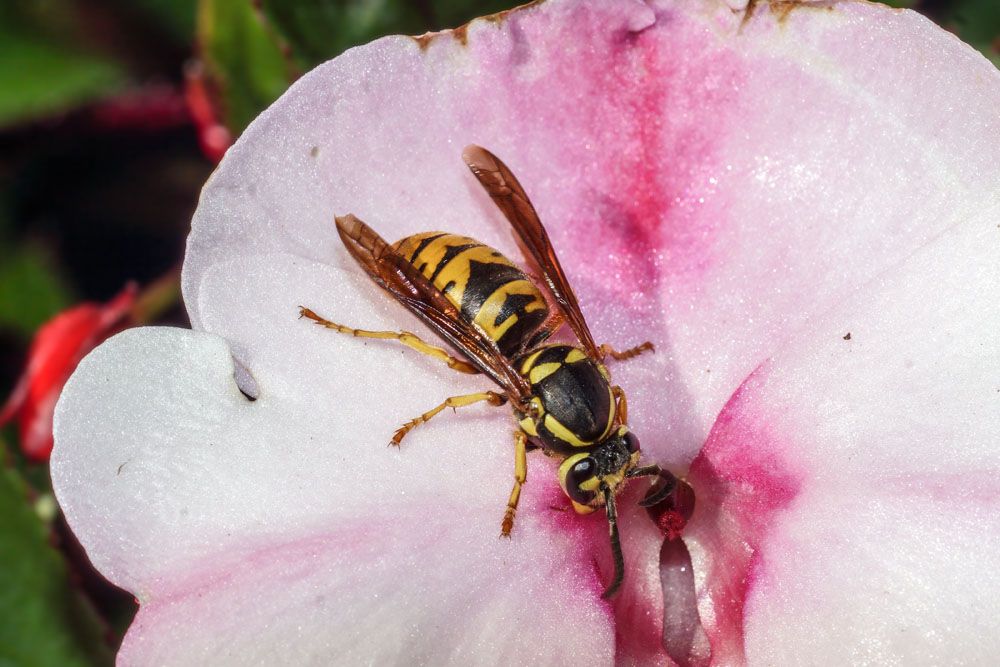
Eastern Yellowjacket – Vespula maculifrons
Eastern Yellowjacket: Appearance, Territory, Damage and Life Cycle
Latin Name: Vespula Maculifrons
Appearance: On the East Coast of North America, the eastern yellowjacket Vespula Maculiforna can nest underground or in cavities such as tree hollows. These social wasps are black, with yellow markings on the front of the head and a yellow band around the abdomen. The eyes are black and the face is mostly yellow. When Vespidae are at rest, their front wings are folded lengthwise. The huge antennas are noticeable.
Hosts Plants: Yellow jackets are carnivorous, preying largely on other insects such as flies and bees. They also eat picnic food, fruits, carrion, and flower nectar. Yellow jackets will travel approximately a mile from their nest to forage.
Territory: The eastern yellow jacket, often known as the eastern yellowjacket, is a kind of wasp found in eastern North America. Despite the fact that the majority of their nests are subterranean, they are frequently considered a problem owing to their nesting in recreational areas and structures.
Damage Insect Cause: Yellowjackets are particularly vexing wasps. They may become quite aggressive, especially if the available food runs out later in the season and their colonies become larger. While wasps might be bothersome when they hover about drink cans at picnics and barbecues, these insects can be quite dangerous: they are responsible for the majority of stinging deaths in the United States. Yellowjackets are useful because they prey on a wide variety of insects, including those that are harmful to agriculture. However, their proclivity to bite and sting makes them unwanted tenants of a yard or, heaven forbid, a house!
Life History and Habits: Yellowjackets all have traits that set them apart from bees. They are black with yellow stripes and medium in size. Because of its unusual black and white coloring, this yellowjacket is also known as the bald-faced hornet. The fact that all of these wasps have relatively small waists is a significant distinction. They are not hairy, and they do not have flattened hind legs like bees to carry pollen. Workers are typically about 1/2 inch long, while queens are about 3/4 inch long.
The queens’ blood contains an antifreeze that allows them to withstand the freezing temperatures that destroy the rest of the colony. In late winter, a queen emerges to establish a new colony. She builds a nest by chewing wood fibers into a pulp that resembles paper. The queen then lays a limited number of eggs, which hatch into larvae. The larvae in this batch are the first batch of workers. Except for egg laying, these workers fulfill all of the nest’s functions.
